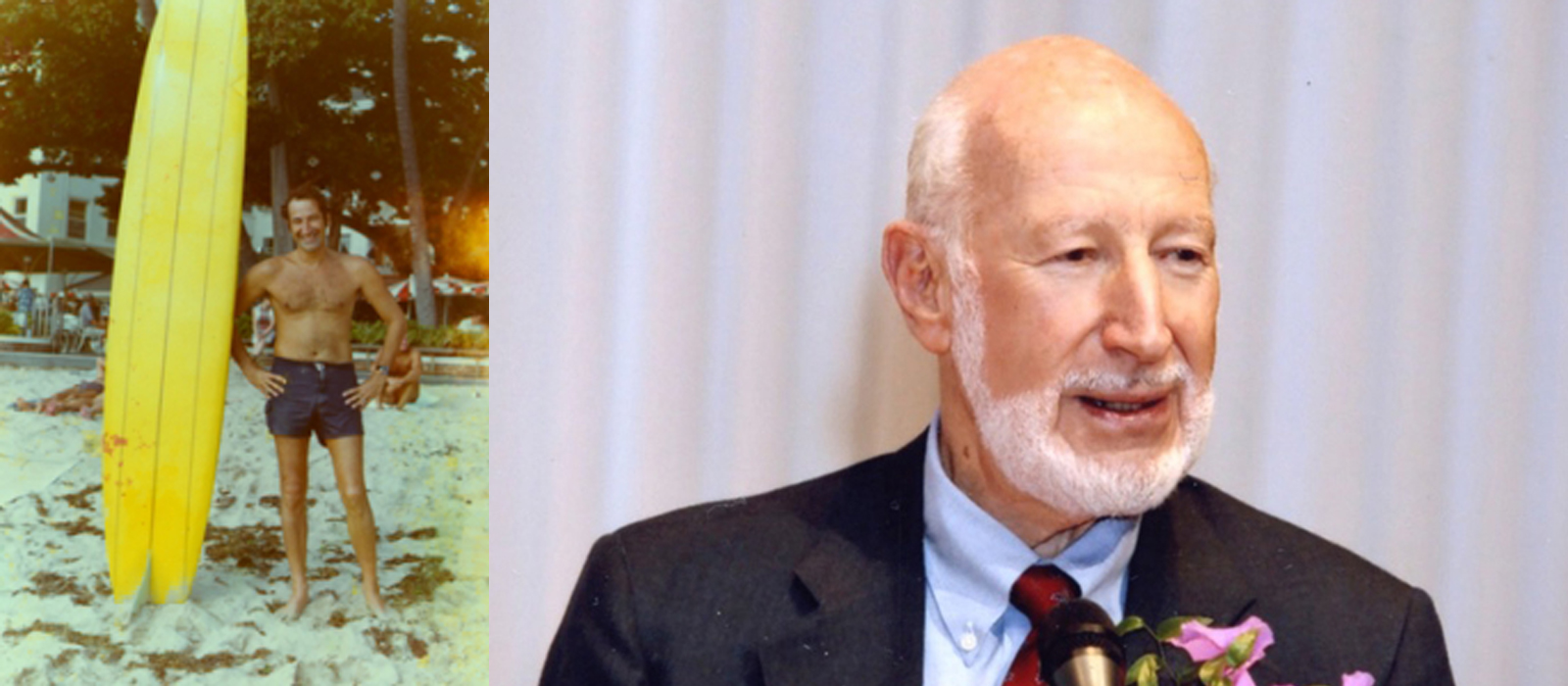 Dr. Norm Abramson was a brilliant innovator whose inventions made far-reaching contributions to modern communications. He was also a co-founder of PTC, longtime member of IEEE, and an avid surfer.
Dr. Norm Abramson was a brilliant innovator whose inventions made far-reaching contributions to modern communications. He was also a co-founder of PTC, longtime member of IEEE, and an avid surfer.
Norm Abramson designed a packet radio network called ALOHAnet while at the University of Hawaii. The technology he developed allowed many digital devices to send and receive data over a shared radio channel. This novel approach did not require complex scheduling for sending data packets. If a packet was not received, it was simply re-sent. The ALOHA method of transmitting packets using a random access channel made efficient use of radio channels and networks, where bandwidth was limited. It was applied for geostationary satellite communications where the previous transmission protocols requiring confirmation of packet reception or need for retransmission could result in significant additional latency, frustrating users.
These were key innovations for the development of the Internet, mobile telephony, satellite communications, and Wi-Fi networks, all of which use variants of ALOHA technologies. Today, ALOHAnet is considered the first modern data network. Vint Cerf and Bob Kahn, known as “the fathers of the Internet,” note the key role of ALOHAnet in its development. Vint Cerf says the ALOHAnet idea is an extraordinary example of “out of the box” thinking. Kahn called ALOHAnet random access protocol a very affordable way of communicating that challenged “the long-held belief that radio channel bandwidth was a scarce resource that should be controlled.”
Norm Abramson was also a widely admired colleague, mentor, and teacher always willing to provide clear explanations of complex concepts, and to contribute his expertise to Hawaii and the Pacific. His pioneering networks linked the Hawaiian Islands to each other and to the islands of the Pacific for early online education over experimental satellite networks.







